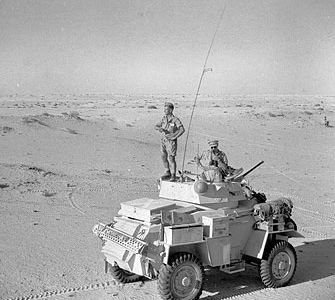

However, the desert surface alternated from a rocky limestone bed with a thin covering of sand to areas of deep soft sand. To the south the ground was made up of desert covered with clumps of camel thorn. North of the rail line near the coastal road rose a shoulder of rock, which formed a small line of hills sloping away to the salt marsh on the coast. Local Bedouin tribesmen then called the spot “el Alamein,” meaning “two flags.” In 1942, the place was an empty space except for the small group of railway buildings standing in the desert. While surveying the route of the pending track, the engineers planted two flags in the sand to mark the stop. The name El Alamein came from the rail stop British engineers built there in the 1920s.
WORLD CONQUEROR 2 BATTLE OF EL ALAMEIN SERIES
There was no line at Alamein on July 1, only a widely scattered series of defensive boxes in disrepair.

Among them were members of the King’s Royal Rifle Corps, who after hearing a BBC radio announcer report that Eighth Army had reached the El Alamein line, looked around at the empty desert, indistinguishable from the miles of sand to the east and west, and commented with curses and derision as only riflemen could. By June 30, the majority of the retreating Eighth Army had either reached or was close to entering the Alamein line. Already, several brushes had taken place in the desert inland of El Daba between small parties of British and Germans, all determined to make the “Alamein line” as quickly as possible. The last-ditch position to which Auchinleck was shepherding his battered command was a point 300 miles east of the Libyan-Egyptian frontier-and less than 100 miles from the city of Alexandria and the vital Suez Canal-at a small railway station known as El Alamein. But this did not alter the fact that Eighth Army was at the time heading back to a last-ditch position with a determined enemy constantly nipping at its heels and trying to strike a mortal blow. If the fight against the Panzerarmee could be maintained until at least some of these reinforcements reached Egypt, then defeat might be averted and a victory over a dangerously overstretched Axis army might be achieved. Further, the British 8th Armored Division and the 44th and 51st Infantry Divisions were en route to Suez. Consolidated B-24 Liberator bombers originally destined for China but rerouted to Palestine. These included 300 American M4 Sherman tanks, 100 self-propelled artillery pieces, and a large number of U.S. Indeed, Auchinleck knew that considerable reinforcements were on their way to Suez. Auchinleck correctly identified that the continued existence of Eighth Army, no matter how much territory was given up, made the present critical situation retrievable. Although it had suffered severe losses in men and material and was much disorganized, it was more bewildered than demoralized its basic framework was still intact and was certainly capable of further efforts. From the fall of Tobruk to the moment the stampede of English units out of the Mersa Matruh defense locale toward the east began, Auchinleck’s objective was to keep Eighth Army together. On June 25, just before the fiasco at Mesra Matruh, the commander of all British forces in the Middle East, General Sir Claude Auchinleck, took personal charge of Eighth Army’s operations. The third event was Eighth Army’s bungled defensive stand at Mersa Matruh, with the loss of a further 7,000 British prisoners of war, on June 26 and 27, which should have delayed if not stopped the enemy’s advance, resulting instead in another precipitate British retreat deeper into Egypt. And with Tobruk’s fall came the capture of 32,000 Commonwealth troops and a promotion to field marshal bestowed on its conqueror, Rommel. The second event was the surprisingly quick collapse in just two days (June 20-21) of the British fortress of Tobruk, which had the year before withstood an Axis siege of eight months. That success forced the British-almost in rout-to flee east over the Libyan-Egyptian border. The first event was the Battle of Gazala (May 26-June 15), which witnessed a resurgent German-Italian Panzerarmee Afrika under Erwin Rommel tear through the fortified British Commonwealth defensive lines. An old cliché admonishes, “Bad things always come in threes.” Whether it was thought of as a law of nature or merely coincidence, a rapid succession of events in North Africa during the summer of 1942 seemed to confirm this widely held notion among the officers and men of the British Eighth Army.


 0 kommentar(er)
0 kommentar(er)
